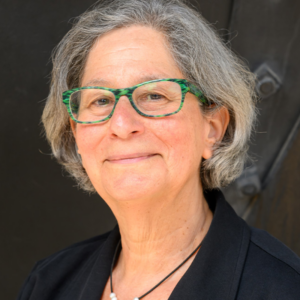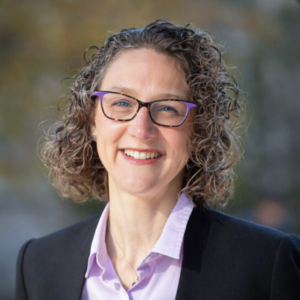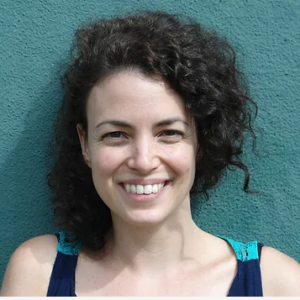 Susan Solomon
Susan Solomon
Lee and Geraldine Martin Professor of Environmental Studies and Chemistry
Susan Solomon is internationally recognized as a leader in atmospheric science, particularly for her insights in explaining the cause of the Antarctic ozone “hole”. She and her colleagues have made important contributions to understanding chemistry/climate coupling, including leading research on the irreversibility of global warming linked to anthropogenic carbon dioxide emissions, and on the influence of the ozone hole on the climate of the southern hemisphere. Her current focus is on issues relating to both atmospheric chemistry and climate change.
More information on Prof. Solomon can be found on the MIT Chemistry website.
 Arlene Fiore
Arlene Fiore
Peter H. Stone and Paola Malanotte Stone Professor of Building Earth, Atmospheric and Planetary Sciences
Arlene Fiore joined the EAPS faculty in 2021 as the Peter H. Stone and Paola Malanotte Stone Professor of Earth, Atmospheric and Planetary Sciences. She attended Harvard University, earning an AB in environmental geoscience in 1997 and completing her PhD studies in Earth and planetary sciences in 2003. Fiore spent seven years as a research scientist in the NOAA Geophysical Fluid Dynamics Laboratory before being appointed to the faculty at Columbia University’s Department of Earth and Environmental Sciences and Lamont-Doherty Earth Observatory in 2011.
Fiore has a long history of professional service, including serving on the National Academy of Sciences Board on Atmospheric Sciences and Climate, multiple NCAR (National Center for Atmospheric Research) advisory panels and committees, and has authored or co-authored numerous reports on issues of air quality and climate for policymakers and government agencies. As a principal investigator and member of the NASA Health and Air Quality Applied Sciences Team, she partners with air and health management groups to address emerging needs with applications of satellite and other Earth science datasets. Among other honors, Fiore has been recognized by the American Geophysical Union with the James R. Holton Junior Scientist Award in 2005 and the James B. Macelwane Medal in 2011.
Read more about Prof. Fiore on the MIT Earth, Atmospheric & Planetary Sciences website.
 John Sterman
John Sterman
Professor of Management at the MIT Sloan School of Management and Director of MIT’s System Dynamics Group
John D. Sterman is the author of many scholarly and popular articles on the challenges and opportunities facing organizations today, including the book Modeling for Organizational Learning, and the award-winning textbook Business Dynamics. Prof. Sterman’s research centers on improving decision making in complex systems, focusing on environmental sustainability, climate change, alternative fuel vehicles and process improvement in organizations. He pioneered the development of “management flight simulators” of corporate and economic systems, many of which, including the C-ROADS interactive climate policy simulation he helped developed, are used around the world by governments, businesses, universities and the public.
Among his honors, Sterman is the recipient of an honorary doctorate, has twice been awarded the Jay W. Forrester Prize for the best published work in system dynamics, received the best application award from the System Dynamics Society, was named one of MIT Sloan’s “Outstanding Faculty” by the BusinessWeek Guide to the Best Business Schools, and has received seven awards for teaching excellence from the students at MIT.
Read more about Prof. Sterman on the Sloan and System Dynamics Group websites.
 Justin Steil
Justin Steil
Associate Professor of Law and Urban Planning
Justin Steil is an Associate Professor of Law and Urban Planning. As a lawyer, a paramedic, and an urban planner, his research focuses on spatial dimensions of inequality. Justin analyzes spatial inequality in the domains of environmental justice, housing and land use policies, and health equity, among others. Recent research on environmental justice focuses on the effects of climate-change-related disasters on renters, including on rents, evictions, and affordable housing production. Work on housing policy includes scholarship on housing discrimination and its effects, fair housing law and policy, gentrification and displacement pressure, and the dynamics of eviction. Scholarship on land use disentangles how the structure of local governance and the regulation of land use interact with housing policies to shape the spatial structure of our social world in ways that produce economic and racial inequality. Recent research on health equity focuses on the effects of neighborhoods on health and on the role of emergency medical services in advancing health equity.
Justin is the co-editor of three books: Furthering Fair Housing: Prospects for Racial Justice in America’s Neighborhoods (2021); The Dream Revisited: Contemporary Debates about Housing, Segregation, and Opportunity (2019); and Searching for the Just City: Debates in Urban Theory and Practice (2009).
Learn more about Prof. Steil and his research on the MIT DUSP website.
 Talia Tamarin-Brodsky
Talia Tamarin-Brodsky
Assistant Professor in Climate Science
Talia Tamarin-Brodsky’s research is driven by questions on the interface between weather and climate. She uses novel approaches, by combining Lagrangian and Eulerian perspectives, to answer pressing issues in atmospheric and climate sciences. Her research interests include atmospheric temperature variability and how it responds to climate change, atmospheric dynamics, regional climate and extremes, subseasonal-to-seasonal predictability, and stratosphere-troposphere interactions.
Her work on midlatitude storms tracks includes studying mechanisms that control the formation, propagation, intensity, and spatial distribution of storms tracks. For example, she applies a Lagrangian storm-perspective to explain the poleward deflection of midlatitude storm tracks in the northern hemisphere, and the projected poleward shift of the storm tracks under climate change. Her work suggested that the latter can be understood by the increased tendency of individual storms to propagate poleward, and explained why it occurs.
More information on Tamarin-Brodsky can be found on the MIT EAPS website.
